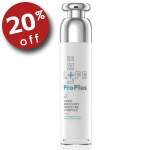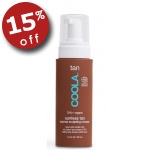Getting to the roots
Although several ways to remove unwanted hair are available, only two methods
are considered permanent by the U.S. Food & Drug Administration:
electrolysis and galvanic tweezers. To be considered permanent, 40% of the targeted hair must be destroyed during the course
of treatment. Because the hair grows in cycles, several treatments
over a period of 9—18 months are required to destroy
all unwanted hair. The length of time between treatments also will vary. In
these methods, which can be used on any area of the body except the eyelash,
nose and ears, a slight electrical, radio or galvanic current destroys the
hair roots, ending future hair growth.
There also are several methods of temporary hair removal:
Body sugaring. The basic procedure can remove your unwanted hair from
the root using a natural honey-like combination of water, sugar and lemon with
no additives, chemicals or
preservatives. The sugar dissolves in water and is odor-free. The amber-colored
paste—almost the consistency of syrup—is warm and goes on your skin
smoothly. Similar to waxing, sugaring can be done on any part of the body,
including the legs, bikini area, arms, underarms, back, eyebrows and upper lip.
It also exfoliates the top layer of skin, leaving it soft
and smooth. Each session lasts about 25—30 minutes, depending
on the area being treated.
Laser. Nurses, medical assistants
and skin care professionals working with physicians can now be trained in this
method of hair removal. Energy is absorbed selectively by the melanin
surrounding the follicle, and the heated pigment disables the follicle and
vaporizes the hair beneath the surface. Most clients report high satisfaction
with the treatment, with some experiencing only minimal re-growth over several
months. However, long-term research on permanency is incomplete, and practitioners
only can claim long-lasting results. While this method is considered safe, a
physician’s examination before treatment will ensure
no medical conditions exist, such as skin melanoma, which could complicate the
treatment. Laser hair removal can
be used anywhere on the body except the eyebrows, because of their proximity to
the eyes. Its best use is for large, densely haired parts of the body—the
legs, arms, back and bikini line.
Threading. Threading originated in the Middle
East and has been used for centuries. The process requires a two-foot length of
regular cotton sewing thread, which is twisted around the hair to remove it by the roots. It doesn’t irritate
the skin or cause wrinkling, and the sessions are short. Threading is safe for
the face area, including the upper lip, chin, eyebrows,
cheeks and sideburns.
Waxing. Waxing has become increasingly popular in spas over the last
few years. Different types of wax and a variety of techniques can be used for
hair removal, depending on the client and the part of the body to be treated.
Hard wax is a no-strip, peel-off wax, and is applied with a spatula in
small patches on the skin in the direction
of hair growth. It won’t bum, but hardens as it cools.
The wax is then removed in the opposite direction. Because it is thick, cloth strips are not
needed. Hard wax is effective for the face, underarms and bikini line—areas
where clients don’t want to let hair grow too long before having it removed. It is not suitable for use on large areas such as
the legs, because it is easier to
work with in smaller pieces.
Soft wax is the most popular type of wax in the U.S. It has the
consistency of thick honey at room temperature, and is warmed and spread onto
the skin in a very thin glaze in the direction of hair growth. A piece of
cotton or a muslin strip is laid over the wax to bond with it, then pulled off in the opposite direction, with hair
adhering to the wax.
Check with your skin care professional about each of the methods available
and discuss which type best suits your needs for hair removal.
The importance of skin
Skin has the ability to touch and feel solid matter. The sense of touch
grasps the material world and all its physical bodies. Each layer of the skin is
specialized to receive different vibrations from the central nervous system,
making it the
“mother of all sensory organs.”
Calcium does the body good
Americans are facing a serious shortage of calcium, say experts from the
University of Colorado and Creighton University. Nutrition professors told
attendees at a calcium nutrition meeting that three out of four Americans do
not get enough calcium, starting in childhood. This is an important finding
since the benefits of calcium may extend beyond the bones to include lowering
blood pressure and preventing colon cancer, experts say.




 Today's random forum topics
Today's random forum topics
 What our customers are saying
What our customers are saying